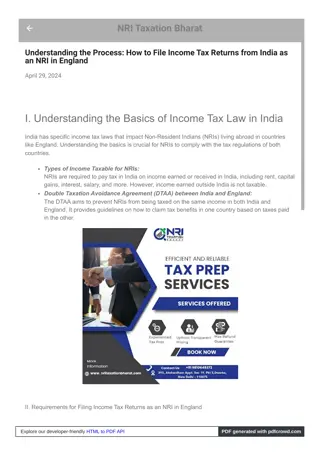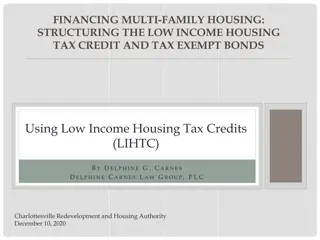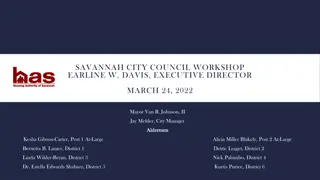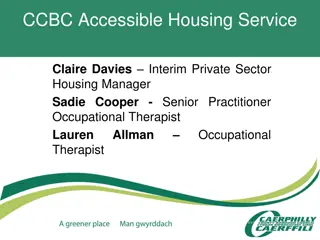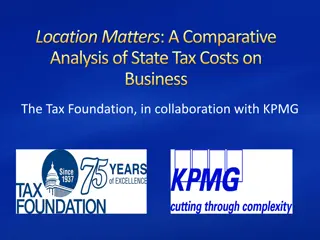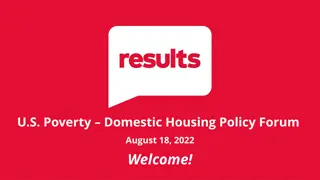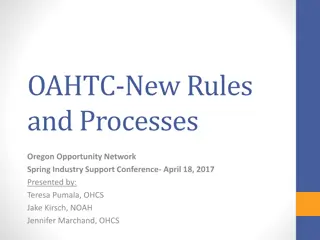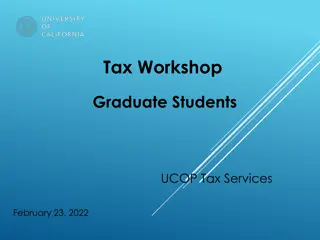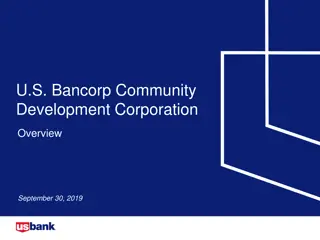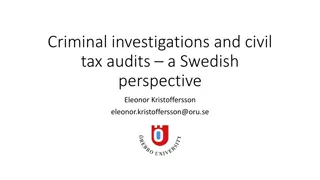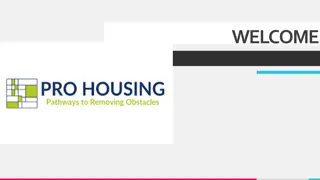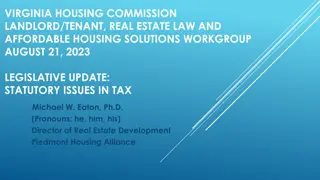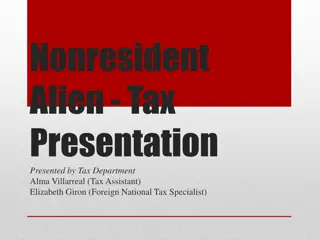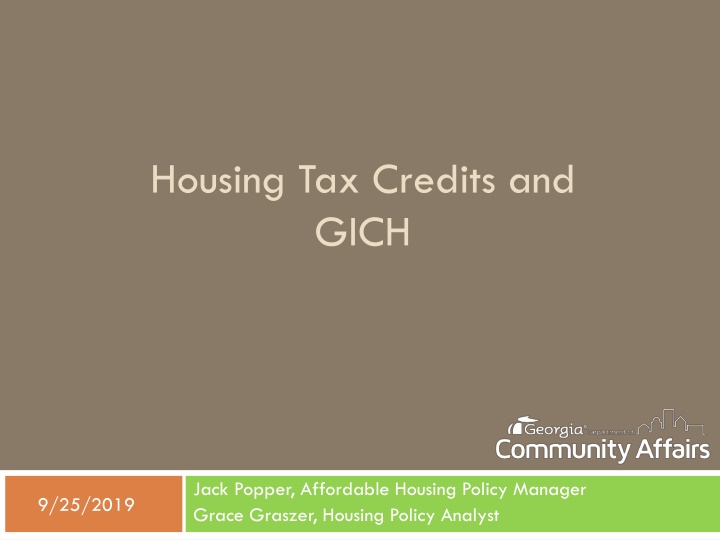
Housing Tax Credits: Benefits and Impact
Delve into the world of Housing Tax Credits (LIHTC) and their impact on communities. Explore how this program works, why it is essential, and real-life case studies showcasing its benefits. Discover the positive effects on affordable housing, economic growth, and community development.
Download Presentation

Please find below an Image/Link to download the presentation.
The content on the website is provided AS IS for your information and personal use only. It may not be sold, licensed, or shared on other websites without obtaining consent from the author. If you encounter any issues during the download, it is possible that the publisher has removed the file from their server.
You are allowed to download the files provided on this website for personal or commercial use, subject to the condition that they are used lawfully. All files are the property of their respective owners.
The content on the website is provided AS IS for your information and personal use only. It may not be sold, licensed, or shared on other websites without obtaining consent from the author.
E N D
Presentation Transcript
Housing Tax Credits and GICH Jack Popper, Affordable Housing Policy Manager Grace Graszer, Housing Policy Analyst 9/25/2019
Overview What is the Housing Tax Credit (LIHTC)? Why would we want it in our community? How does it work? How can it work for us? What about this GICH letter? Case Studies
What is the Housing Tax Credit? Enacted by Tax Reform Act of 1986 under Pres. Reagan Largest producer of affordable housing in the country Highly accountable: private sector participation and state administration
Housing Credit Impact Addresses critical need for safe, decent housing for: Seniors seeking independent living Georgia working families with low and moderate incomes Individuals with disabilities Residents at Lone Mountain Village, Ringgold GA
Housing Credit Impact (cont.) First-year Economic Impact for every 1,000 tax credit units built: 1,130 jobs created $107 million generated in local income $42 million generated in tax revenue Construction jobs created at Waterford Estates, Dublin, GA
What About Property Values? Several studies have shown that affordable housing generally has no adverse effects and may even have positive impacts Design, Management, Location, and Dispersion Traffic? Studies show that affordable housing residents own fewer cars and drive less than residents of market-rate homes
How Competitive LIHTC Works: The IRS allocates ~$2.76/resident to each state Georgia in 2019: $28,994,303 State Housing Finance Agency sets the rules via the Qualified Allocation Plan (QAP) Developers compete to win award of 9% credits Private investors contribute equity to build housing and receive benefits of the tax credits Housing is built and rents must be affordable (typically 60% AMI) for at least 30 years Once housing is inhabited, then tax benefits begin
Snapshot: 2018 Funding Round 36 properties funded Around 47% in rural areas 14% went to preservation 2,385 units financed 13 new and rehabilitated senior properties funded
GICH Advantages in QAP DCA Community Initiatives GICH Community support for an Application within its jurisdiction gives competitive advantage Must issue letter for only one Application, signed by Primary or Secondary Point of Contact (See 2019 QAP, p. 25 of Scoring) Additional Local Government letter in support of decision
Other Opportunities to Score Leveraging with local HOME, CDBG, or other funds Long-term ground lease Community Revitalization or Redevelopment plans adopted by local government Community Transformation initiatives Purpose Built Communities and Choice Neighborhood Implementation Mission-driven Public Housing Authority
Other Opportunities to Score Proximity to desirable amenities (licensed child care, medical care providers, retail options, public library, etc.) Proximity to regular or on-call bus or transit routes Historic preservation Above average or Beating the Odds schools Access to local jobs
2020 QAP Development QAP policy is an annual, iterative process Draft will be available in early October with a 30- day comment period What to expect: Substantive Changes document Redlined version of QAP
Public Hearing Schedule October 8th (10 AM) - Webinar October 10th (10 AM) - Dublin, GA (City Council Chambers) October 23rd (10 AM) Atlanta, GA - (Cobb Galleria) *2020 Applications due in late May **2021 and future QAPs will be developed year- round
Team Contact and Leader Update Form GICH community must be a current participant or a certified alumni re-certify every 2 years GICH letter must be signed by the Primary or Secondary Contact on file with the UGA Housing and Demographic Research Center These roles can be officially re-designated Complete form from UGA or DCA website Primary Contact should be an active member Local Government: Controlling elected body
Steps to Success with LIHTC Case Study Griffin, GA
Griffins Steps to Success Partnerships Public Housing Authority City Land Bank Housing Council Housing plan Developer relationships Alternate funding sources Communication
Steps to Success with LIHTC Case Study Rome, GA
Romes Steps to Success Partnerships City South Rome Redevelopment Agency South Rome Redevelopment Corporation Purpose Built Communities Public Housing Authority Land ownership Developer relationships Additional Funding
Steps to Success with LIHTC Case Study Thomasville, GA
Thomasvilles Steps to Success GICH letter scoring criteria Housing choice and diversity Mixed use Civic space Connectivity to existing neighborhoods Location Streetscape Architectural aesthetics Economic and sociologic impact Zoning overlay and design guidelines
Wrap Up To receive information on trainings, workshops, and general program updates, sign up on our email list at: https://www.dca.ga.gov/safe-affordable- housing/rental-housing-development/housing-tax- credit-program-lihtc Contact Jack Popper or Grace Graszer at jack.popper@dca.ga.gov or gm.graszer@dca.ga.gov


![Town of [Town Name] Real Estate Tax Rates and FY 2024 Budget Summary](/thumb/62211/town-of-town-name-real-estate-tax-rates-and-fy-2024-budget-summary.jpg)
